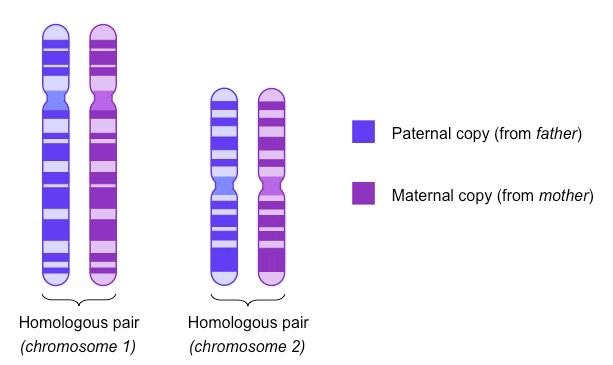![]()
Understanding:
• Homologous chromosomes carry the same sequence of genes but not necessarily the
same alleles of those genes
Sexually reproducing organisms inherit their genetic sequences from both parents
- This means that these organisms will possess two copies of each chromosome (one of maternal origin ; one of paternal origin)
- These maternal and paternal chromosome pairs are called homologous chromosomes
Homologous chromosomes are chromosomes that share:
- The same structural features (e.g. same size, same banding patterns, same centromere positions)
- The same genes at the same loci positions (while the genes are the same, alleles may be different)
Homologous chromosomes must be separated in gametes (via meiosis) prior to reproduction, in order to prevent chromosome numbers continually doubling with each generation
Examples of Homologous Chromosomes

